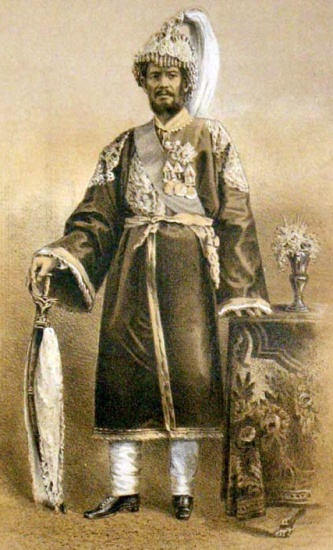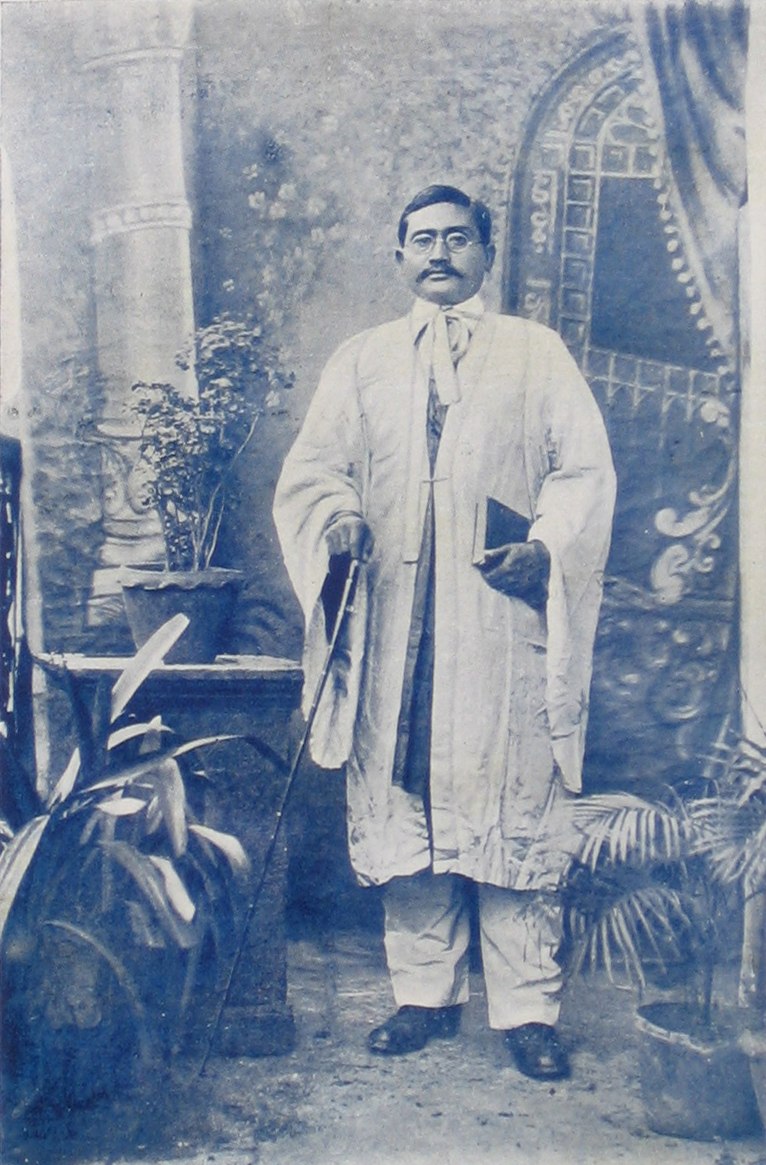|
1951 Nepalese Revolution
The revolution of 1951 () in Nepal, also referred to as Sat Salko Kranti, was a political movement against the direct rule by the Rana dynasty of Nepal which had lasted for 104 years. It marks the beginning of the political awakening and democratic movements in Nepal, and resulted in immediate abolition of the institutionalized hereditary Prime Minister system in Nepal. Background of Rana regime The rise of the Ranas was heightened by plotting the Kot Massacre by Jang Bahadur Rana and his brothers gained power, thus reduced the power of monarch to a figurehead, and the position of Prime Minister was made powerful and hereditary. The Rana regime pursued a policy of isolating Nepal from external influences. The Ranas further established their power by turning pro-British, and assisted the British during the Sepoy Rebellion in 1857. Organization for revolution Popular dissatisfaction against of the Ranas started emerging from among educated people and from within the Ranas, many o ... [...More Info...] [...Related Items...] OR: [Wikipedia] [Google] [Baidu] |
Nepalese Democracy Movement
The Nepalese democracy movement was the combination of a series of political initiatives and movements from the 20th century to 2008 that advocated the establishment of representative democracy, a multi-party political system and the abolition of monarchy in Nepal. It has seen three major movements, the Revolution of 1951, Jana Andolan and Loktantra Andolan (Nepali: लोकतन्त्र आन्दोलन, romanized: ''Loktantra Āndolan'') which ultimately abolished the Shah monarchy, transitioned Nepal towards a republic and reintroduced multi-party bicameral democracy. The beginning of a national movement for democracy in Nepal was the ousting of the Ranas, the long-established Nepalese royal family, in the mid-20th century which was influenced by ethnic and political developments from the Indian nationalist movement. However, this period of democracy ended in 1960 and the Panchayat system of government was introduced, abolishing recent democratic institutions, b ... [...More Info...] [...Related Items...] OR: [Wikipedia] [Google] [Baidu] |
Shukraraj Shastri
Shukra Raj Shastri (Nepali: ) (born Shukra Raj Joshi) (1894–24 January 1941) was a Nepalese intellectual and fighter for democracy who was executed by the autocratic Rana dynasty. He is one of the four martyrs of the Nepalese revolution that toppled the Rana regime. The other three are Dashrath Chand, Dharma Bhakta Mathema and Ganga Lal Shrestha. Shastri was also a social reformer and author who wrote a number of books in Nepali and Nepal Bhasa. Early life Shastri was born in Varanasi, India where his father Madhav Raj and mother Ratna Maya Joshi were living in forced exile due to political reasons. Madhav Raj was a leader of the Arya Samaj in Nepal. The Joshis were originally from Lalitpur. Shukra Raj was schooled in India, and he acquired the title Shastri after earning a Shastri degree from Dehradun. He became better known by this name than his actual surname Joshi. Democracy fighter Returning to Nepal, Shastri joined the democracy struggle. During a demonstration or ... [...More Info...] [...Related Items...] OR: [Wikipedia] [Google] [Baidu] |
Birendra Of Nepal
Birendra Bir Bikram Shah Dev ( ne, श्री ५ महाराजाधिराज वीरेन्द्र वीर विक्रम शाह देव ) (28 December 1945 – 1 June 2001) was the tenth Shah Ruler and the King of Nepal from 1972 until his assassination in 2001. He was the eldest son of King Mahendra. Early life and education Birendra was born at the Narayanhiti Royal Palace in Kathmandu as the eldest son of the then Crown Prince Mahendra Bir Bikram Shah Dev and his first wife, Crown Princess Indra Rajya Lakshmi Devi. Birendra spent eight years studying at St Joseph's School, a Jesuit school in Darjeeling, with his brother Gyanendra. On 13 March 1955, their grandfather King Tribhuvan died and their father succeeded the Nepalese throne. With his father's ascension, Birendra became the crown prince of Nepal. In 1959, Birendra was enrolled at Eton College in the United Kingdom. After studying at Eton until 1964, he returned to Nepal where he be ... [...More Info...] [...Related Items...] OR: [Wikipedia] [Google] [Baidu] |
Mahendra Of Nepal
Mahendra Bir Bikram Shah Dev ( ne, श्री ५ महाराजाधिराज महेन्द्र वीर विक्रम शाह देव; 11 June 1920 – 31 January 1972) was the King of Nepal from 13 March 1955 until his death in 1972. Following the 1960 coup d'état, he established the partyless Panchayat system which governed the country for 28 years until the introduction of multiparty democracy in 1990. During his reign, Nepal experienced a period of industrial, political and economic change that opened it to the rest of the world for the first time after the 104-year-long reign of the Rana rulers, who had kept the country under an isolationist policy, came to an end in 1951. Early life King Mahendra was born in the year 11 June 1920 (1977 B.S) at the Narayanhiti Palace to King Tribhuvan of Nepal. King Mahendra was the eldest child of King Tribhuvan and Queen Kanti. Under the Rana dynasty, the power of the king was reduced to that of a figure ... [...More Info...] [...Related Items...] OR: [Wikipedia] [Google] [Baidu] |
Tribhuvan Bir Bikram Shah
Tribhuvan Bir Bikram Shah ( ne, श्री ५ महाराजाधिराज त्रिभुवन वीर विक्रम शाह देव ) (30 June 1906 – 13 March 1955) was King of Nepal from 11 December 1911 until his death. Born in Kathmandu, the capital city of Nepal, he ascended to the throne at the age of five, upon the death of his father, Prithvi Bir Bikram Shah, and was crowned on 20 February 1913 at the Nasal Chowk, Hanuman Dhoka Palace in Kathmandu, with his mother acting as regent. At the time of his crowning, the position of monarch was largely ceremonial, with the real governing power residing with the Rana family. Family Tribhuvan was born on 30 June 1906 to Prithvi Bir Bikram Shah and Divyeshwari Lakshmi Devi Shah. After the death of his father, Tribhuvan Bir Bikram Shah ascended the throne on 11 December 1911, at the age of five. Queen Mother Divyeshwari Lakshmi Devi was appointed the regent until Tribhuvan would come to his age. He ... [...More Info...] [...Related Items...] OR: [Wikipedia] [Google] [Baidu] |
Rajeshwor Devkota
Rajeshwor Devkota ( ne, राजेश्वर देवकोटा; 8 October 1929 – 10 August 2015) was a Nepalese politician and writer. He was elected into the National Panchayat for several terms and has also served as the speaker, and as minister for education and land reforms. He received the Madan Puraskar The Madan Puraskar ( ne, मदन पुरस्कार) is a literary honor in Nepal which Madan Puraskar Guthi confers annually for an outstanding book in the Nepali language published within the calendar year. It is considered the most pre ... and the Sajha Purasakar literary awards. References External links * * 2015 deaths 1929 births Nepalese male writers Nepali-language writers Place of birth missing Members of the Rastriya Panchayat Members of the National Assembly (Nepal) Sajha Puraskar winners Khas people {{Nepal-politician-stub ... [...More Info...] [...Related Items...] OR: [Wikipedia] [Google] [Baidu] |
Ram Prasad Neupane
The Jayatu Sanskritam movement begin in 1947 AD(BS 2004), started by students of the Tin Dhara Pakshala Sanskrit School in Nepal. They demanded democracy, basic welfare, and the inclusion of modern subjects in their curriculum. It was the first student uprising in Nepal's history, and led to the Revolution of 1951 and the fall of the Rana dynasty. Started by students of the Tin Dhara Pakshala hostel, and later also included students at a Rajkiya Sanskrit Vidyalaya school near the Ranipokhari; the protests centred around restrictions on education, as the only subject allowed in the Sanskrit schools was the study of Sanskrit. This contrasted with the wider educational opportunities and higher status of students related to the ruling Rana clan. The protestors became known for the slogan they would call, ''jayatu Sanskritam'' ("victory to the cause of Sanskrit"). On 1 June 1947, the students submitted a written demand to Prime Minister Padma Shumsher requesting courses in geog ... [...More Info...] [...Related Items...] OR: [Wikipedia] [Google] [Baidu] |
India
India, officially the Republic of India ( Hindi: ), is a country in South Asia. It is the seventh-largest country by area, the second-most populous country, and the most populous democracy in the world. Bounded by the Indian Ocean on the south, the Arabian Sea on the southwest, and the Bay of Bengal on the southeast, it shares land borders with Pakistan to the west; China, Nepal, and Bhutan to the north; and Bangladesh and Myanmar to the east. In the Indian Ocean, India is in the vicinity of Sri Lanka and the Maldives; its Andaman and Nicobar Islands share a maritime border with Thailand, Myanmar, and Indonesia. Modern humans arrived on the Indian subcontinent from Africa no later than 55,000 years ago., "Y-Chromosome and Mt-DNA data support the colonization of South Asia by modern humans originating in Africa. ... Coalescence dates for most non-European populations average to between 73–55 ka.", "Modern human beings—''Homo sapiens''—originated in Africa. Th ... [...More Info...] [...Related Items...] OR: [Wikipedia] [Google] [Baidu] |
Jogbani
Jogbani is a town, a notified area in Araria District of Bihar state, India. It lies on the Indo-Nepal border with Morang District, Koshi Zone and is a gateway to Biratnagar city. There is a customs checkpoint for goods at the border. Indian and Nepalese nationals cross without restrictions. Transport Jogbani is the economical town of Bihar () situated in the eastern region having dense population of 2,34,891 since 2001 population census. The city earns huge custom per annum of approximately NRS 812,652,971,344,00. Jogbani city is near to Forbesganj, Bihar from southern part of it. Road starts from Jogbani that connects it to Forbesganj. Forbesganj is well connected to all part of by . So, Jogbani has direct connectivity to Purnia, Katihar, Bhagalpur, Saharsa, Patna, Siliguri, Guwahati and Gorakhpur. Rail Jogbani railway station is the last railway station of Barauni-Katihar, Saharsa and Purnia sections. has a good connectivity to North India and East India. D ... [...More Info...] [...Related Items...] OR: [Wikipedia] [Google] [Baidu] |
Biratnagar
Biratnagar () is a metropolitan city in Nepal, which serves as the capital of Province No. 1. With a population of 242,548 as per the 2011 census, it is the largest city in the province and also the headquarters of Morang district. As per the preliminary report of 2021 Nepal census, Biratnagar has an estimated city population of 244,750. It is one of the cities of the ''Greater Birat Development Area'' which incorporates the cities of Biratnagar- Itahari-Gothgau- Biratchowk- Dharan primarily located on the Koshi Highway in Eastern Nepal, with an estimated total urban agglomerated population of 804,300 people living in 159,332 households. Biratnagar is located east of the capital, Kathmandu, and north of the bordering town of Jogbani in the Indian state of Bihar. Biratnagar was declared a metropolitan city on 22 May 2017, a merger with additional wards pushing the total population to over 240,000. It is the sixth most populous city of Nepal after Kathmandu, Pokhara, Bha ... [...More Info...] [...Related Items...] OR: [Wikipedia] [Google] [Baidu] |





_(restoration).jpg)

